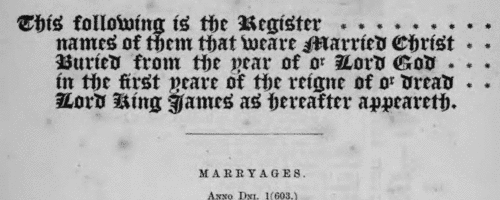Our indexes include entries for the spelling palmer. In the period you have requested, we have the following 3,756 records (displaying 1,141 to 1,150):
 Masters of clerks and apprentices
(1783) Masters of clerks and apprentices
(1783)
Apprenticeship indentures and clerks' articles were subject to a 6d or 12d per pound stamp duty: the registers of the payments usually give the master's trade, address, and occupation, and the apprentice's name, as well as details of the date and length of the apprenticeship. 2 January to 21 June 1783. IR 1/31 | Sample scan, click to enlarge

|
Soldiers, administrators, refugees and merchants in America
(1783)
These are the headquarters papers of sir Guy Carleton, British commander-in-chief at the end of the American war of independence. Many of the individuals recorded were part of the British military administration, but others are refugees and merchants whose lives had been disrupted by the conflict. These records cover April to December 1783. | Sample scan, click to enlarge

|
Wandsworth Burials
(1783)
The ancient parish of Wandsworth in Surrey comprised the single township of Wandsworth, including the hamlets of Garratt, Half Farthing and Summers Town. It lay in the archdeaconry of Surrey of the diocese of Winchester: unfortunately, few bishop's transcripts of Surrey parish registers survive earlier than 1800. Although the original parish registers of Wandsworth doubtless commenced in 1538, the volume(s) before 1603 had been lost by the 19th century. In 1889 a careful transcript by John Traviss Squire of the first three surviving registers was printed, and we have now indexed it year by year. From 1760 onwards the burial registers contain date of burial, and full name; for the burial of children, the parents' names are only occasionally stated, just the word 'inf.' for infant; for the burial of wives, the husband's name; ages are given for adults. Extra details such as date or cause of death, address or occupation are almost never given. The burial registers are considerably more bulky than the baptism registers, because the burying ground was used by Dissenters, who formed a large part of the population. These include a French Protestant congregation that worshipped in a church (the registers of which do not survive) in a courtyard immediately opposite the parish church. The Quakers had a cemetery of their own. 'P.' or 'Paup.' indicates the burial of a pauper. | Sample scan, click to enlarge

|
 Clerks and apprentices
(1784) Clerks and apprentices
(1784)
Apprenticeship indentures and clerks' articles were subject to a 6d or 12d per pound stamp duty: the registers of the payments usually give the master's trade, address, and occupation, and the apprentice's name, as well as details of the date and length of the apprenticeship. 2 January to 31 December 1784. IR 1/32 | Sample scan, click to enlarge

|
 Masters of clerks and apprentices
(1784) Masters of clerks and apprentices
(1784)
Apprenticeship indentures and clerks' articles were subject to a 6d or 12d per pound stamp duty: the registers of the payments usually give the master's trade, address, and occupation, and the apprentice's name, as well as details of the date and length of the apprenticeship. 2 January to 31 December 1784. IR 1/32 | Sample scan, click to enlarge

|
Brides and grooms
(1785)
The Daily Universal Register of London carried marriage notices among the general news of the day. May 1785 | Sample scan, click to enlarge

|
Captains of merchantmen at Gravesend
(1785)
The Daily Universal Register of London carried detailed lists of shipping news from ports around the world - arrivals, departures, ships in port, ships spoken to in passage - mostly, but not entirely, relating to British merchantmen. May 1785.
| Sample scan, click to enlarge

|
Captains of merchantmen at the Custom House
(1785)
The Custom House in the port of London posted daily lists of ships reporting in, giving ships' names, captains' names (surname and initial), and where they had arrived from. These lists were printed in the Daily Universal Register. May 1785. | Sample scan, click to enlarge

|
 Clerks and apprentices
(1785) Clerks and apprentices
(1785)
Apprenticeship indentures and clerks' articles were subject to a 6d or 12d per pound stamp duty: the registers of the payments usually give the master's trade, address, and occupation, and the apprentice's name, as well as details of the date and length of the apprenticeship. 2 January to 31 December 1785. IR 1/32 | Sample scan, click to enlarge

|
Deaths
(1785)
Death notices from the Daily Universal Register of January 1785. | Sample scan, click to enlarge

|
Research your ancestry, family history, genealogy and one-name study by direct access to original records and archives indexed by surname.












